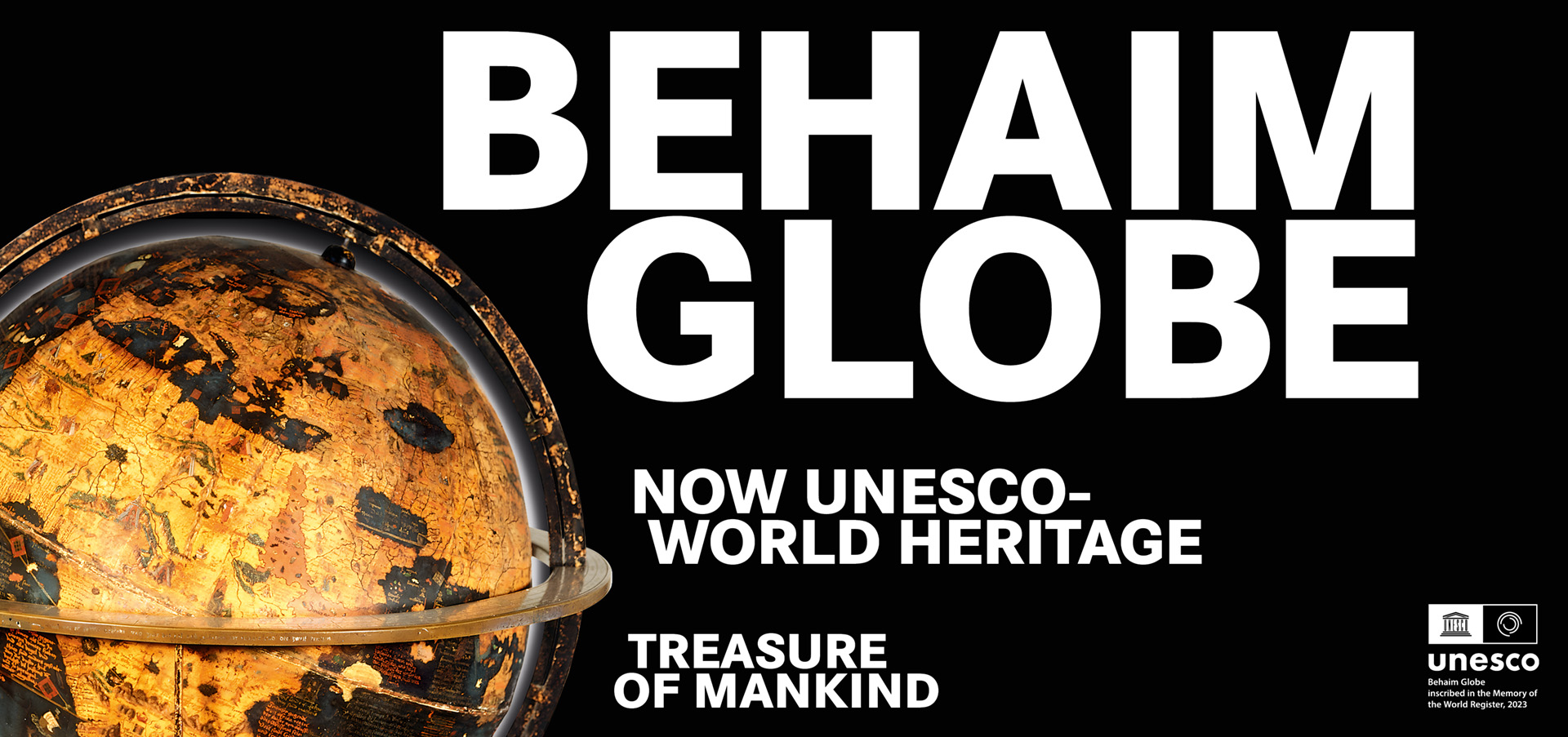Behaim Globe
The Behaim Globe is a testament to an early chapter in the history of globalization that is as illuminating as it is somber, and reflects two crucial turning points in the European view of the world. When it was created in 1492, no one in Europe knew of the existence of the American continent. In October 1492, Christopher Columbus landed in the Bahamas, which, from a European perspective, marks the beginning of modern globalization. Since America is missing on the Behaim Globe, it reflects the imminent seismic shift in the European understanding of the world at that time. For a long time, it stood for the success story of European “discoveries” based on science and technology.
Today, against the backdrop of a new critical view of the colonial legacy and globalization, the Behaim Globe tells a different story and again reflects a turning point in the relationship between Europe and the rest of the world. The Behaim Globe now serves as a vital document of European global conquest and the Atlantic slave trade. In the 15th century and the years around the making of the globe, the Europeans were determined to circumnavigate Africa, not merely to open up a sea route to India, but also to hasten the economic exploitation of the African continent. Now in hindsight, the globe makes clear how much the emergence of our modern world was based on the violent appropriation of raw materials, on the slave trade and the plantation economy. The Behaim Globe dates from and shows the first stage of the subjugation and division of the world by Europeans.
As an outstanding historical document, the Behaim Globe continues to transport global knowledge, by making us study our troubled European past as mapped in the outlines of other continents. A measured look back reveals not only splendor but also dark shadows and open wounds. Thus, by recognizing the globe’s significance as a cultural-historical artifact, we not only commemorate the European conquests, but also the African slaves who played a major role in the creation of our modern world.
The Oldest Surviving Globe
in the World
Manufacturers: Martin Behaim (draft), Georg Glockendon among others
Date: 1492
Place of origin: Nürnberg
Inventory number: WI1826
Object catalogue (German language only)




